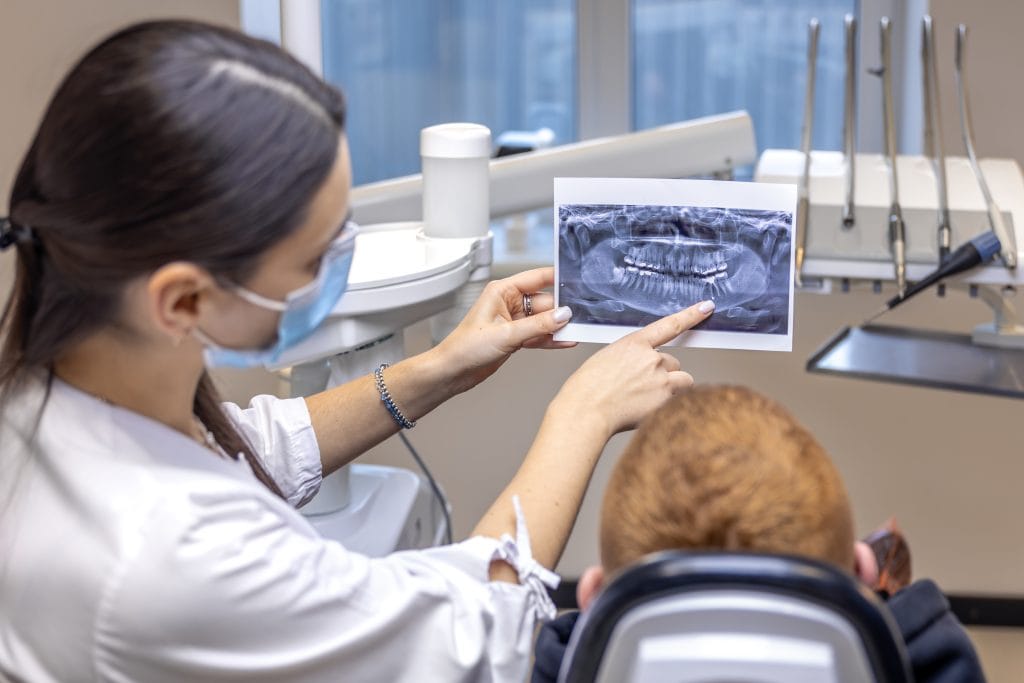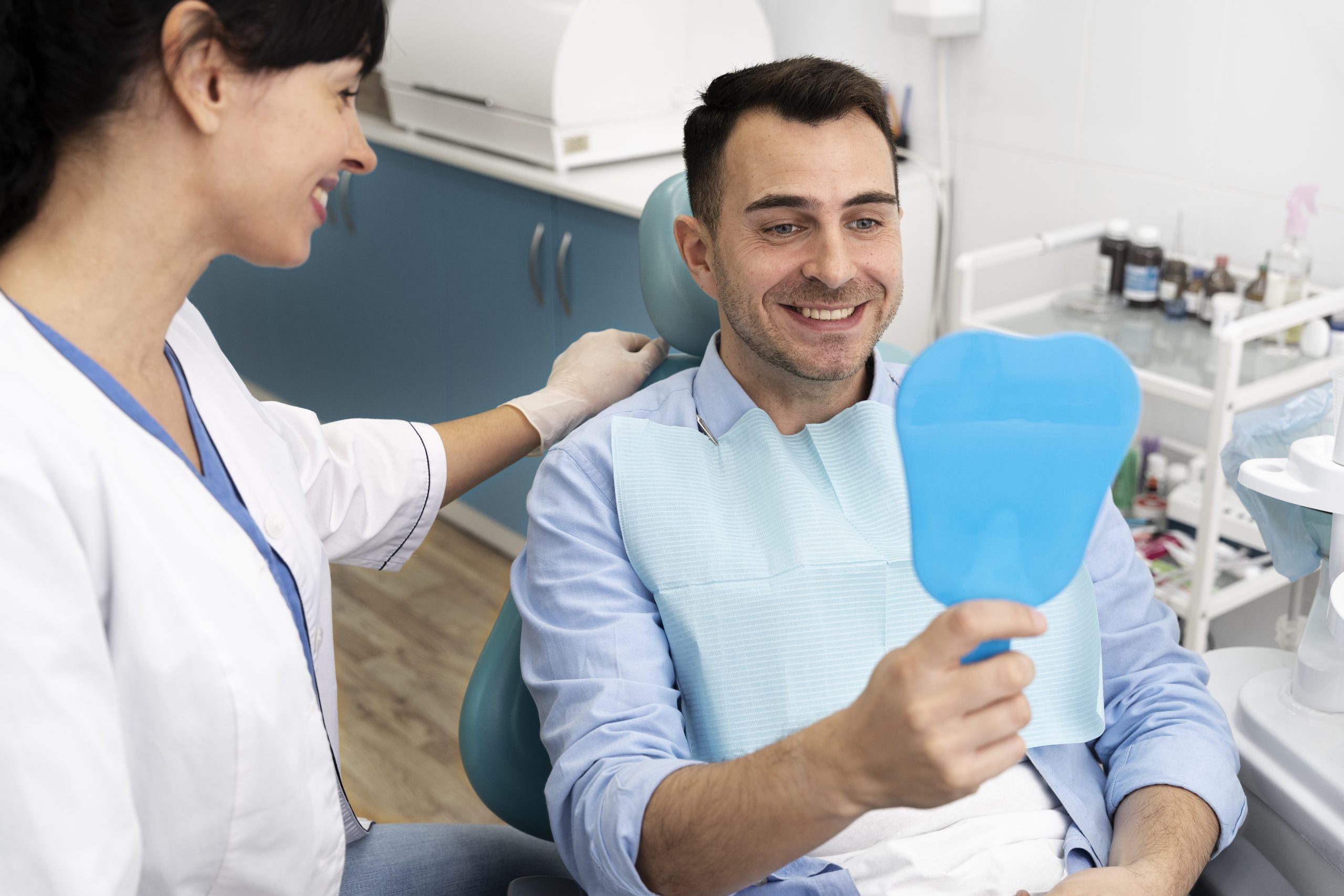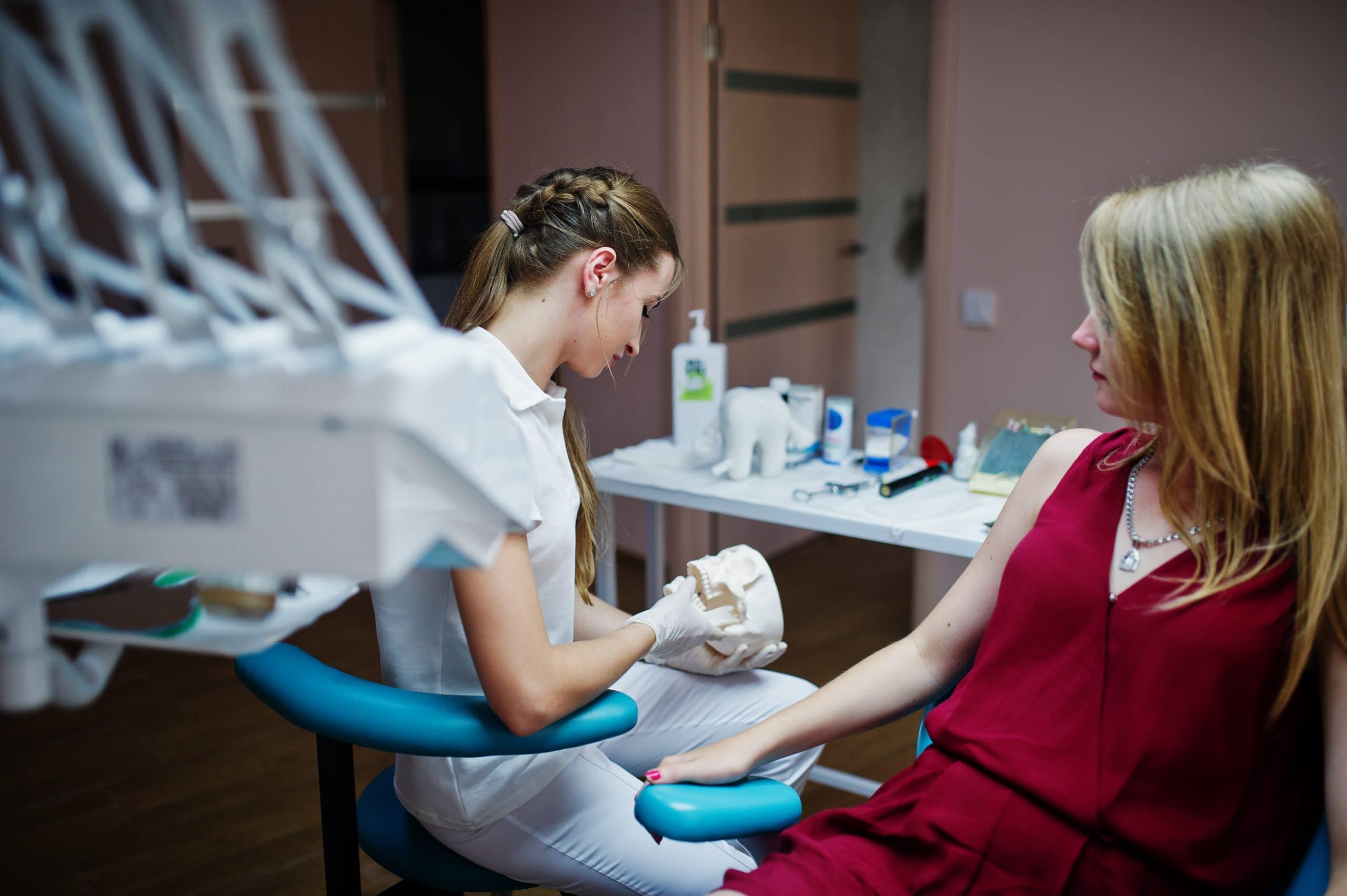All-on-Four dental implants are a popular treatment option for patients who have lost multiple teeth or require full-arch rehabilitation. This procedure uses four strategically placed implants to support a dental prosthesis. It is often chosen as an alternative to traditional dentures due to its stability and function. However, not all patients may be suitable candidates, and outcomes can vary depending on individual health and anatomical factors.
While many patients benefit from improved chewing ability and confidence, it’s important to explore the risks involved. The downside of All-on-Four dental implants may include complications such as implant failure, prosthesis wear, or gum irritation. Understanding these limitations helps patients choose the treatment that’s right for them based on their personal needs, preferences, and oral health. This article will outline these considerations to provide a balanced and realistic overview of the procedure.
Contents Navigation
- 1 Summary of the Content:
- 2 What Is the All-on-Four Implant System, and How Does It Work?
- 3 Common All-on-4 Dental Implant Problems
- 4 Risks and Limitations of All-on-Four Treatment
- 5 Can All-on-Four Implants Fail?
- 6 Bone Loss After All-on-4: Is It a Concern?
- 7 Managing Expectations: Is All-on-Four Right for You?
- 8 Final Thoughts
Summary of the Content:
- The All-on-Four implant system is a recognised method for replacing a full arch of missing teeth with a fixed prosthesis supported by four implants. This approach uses angled posterior implants to optimise bone use and may reduce the need for grafting.
- Compared to removable dentures, All-on-Four provides a non-removable option that is secured in place by a dentist. While this can improve function, patients should expect an adjustment period.
- Common complications may include implant failure, bite misalignment, gum irritation, or prosthesis wear. Not every patient experiences these issues, and their outcomes depend on health, habits, and ongoing dental care.
- Risks and limitations include insufficient bone density, challenges adapting to a fixed prosthesis, and the non-removable nature of the bridge. Suitability requires a thorough clinical assessment.
- Long-term considerations include the possibility of bone loss and the need for maintenance or replacement over time. Regular professional care supports implant health and stability.
What Is the All-on-Four Implant System, and How Does It Work?
The All-on-Four implant system is a clinically recognised treatment for full-arch tooth replacement that offers a stable option supported by four dental implants. Below is an explanation outlining how it works and how it differs from other options:
- Strategic Use of Four Implants:
The All-on-Four system places four titanium implants into the jawbone—two at the front and two angled at the back for optimal bone use. This configuration supports a full arch prosthesis and provides stability while aiming to minimise the need for additional procedures such as bone grafting. - Stable Full-Arch Prosthesis:
Once the implants are in place, a custom-made dental bridge is attached, replacing all teeth in the upper or lower arch. This bridge is not removable by the patient and must be maintained through regular professional care and daily oral hygiene. - Angled Posterior Implants for Bone Utilisation:
Traditional implant methods may require more implants or bone grafting to achieve stability, depending on the patient’s jawbone volume and condition. The All-on-Four system places angled posterior implants to engage denser bone at the front of the jaw, which may reduce the need for bone grafting. - Alternative to Removable Dentures:
Unlike conventional dentures, which rest on the gums and are removed daily, All-on-Four implants are secured in place and designed to remain in the mouth. This can improve function and comfort, though it may require an adjustment period. - Distinction from Full-Mouth Implants:
Full-mouth implant procedures often use six to eight implants per arch and may involve multiple surgical stages, depending on clinical needs. The All-on-Four system is designed to use four implants per arch and may require fewer visits, subject to individual assessment and treatment planning.
This system may not be appropriate for all patients, and a thorough clinical assessment is essential to determine individual suitability. Always consult with a qualified dental professional before considering implant-based treatment options.
Common All-on-4 Dental Implant Problems

While All-on-Four dental implants are an effective option for full-arch tooth replacement, it’s important to understand the potential complications that can arise after treatment. These issues aren’t always immediate and may develop gradually, depending on a patient’s oral health, habits, and ongoing maintenance. Exploring the downside of All-on-Four dental implants can help you weigh the risks and benefits before committing to treatment. Below, we’ll outline some common problems patients may experience and explain how they can be identified, managed, or prevented.
Dental Implant Failure or Loosening
Dental implant failure or loosening is uncommon, but it can occur when the implant does not properly integrate with the jawbone during the healing process. This complication may arise due to insufficient bone density, improper placement, or the body’s response to the implant material. Patients who smoke or have uncontrolled diabetes face a significantly higher risk of implant failure due to compromised healing ability. Additionally, poor oral hygiene can lead to inflammation around the implant, potentially resulting in long-term stability issues.
Maintaining a consistent oral care routine is essential to the success and longevity of dental implants. Regular professional checkups help monitor implant health and allow early intervention if problems arise. Dentists assess risk factors before treatment and may recommend lifestyle changes to support implant integration. While many patients experience positive outcomes, results can vary based on individual health, compliance, and clinical circumstances.
Bite Misalignment or Discomfort
The positioning of the All-on-Four prosthesis plays an important role in achieving proper bite alignment and overall comfort during daily oral function. If the prosthesis is not accurately aligned, it may lead to bite imbalances that place excessive pressure on certain teeth or areas. This can cause discomfort when chewing, and in some cases, may contribute to jaw strain or muscle fatigue. Minor misalignments are not uncommon and can often be addressed through careful assessment and professional adjustments.
Regular follow-up visits with your dentist are essential to monitor bite alignment and detect early signs of discomfort or functional issues. Adjustments may involve reshaping the prosthesis or refining occlusion to improve comfort and long-term function. These visits also play a role in adjusting any uneven force distribution before it leads to further complications. Addressing bite misalignment early can help maintain jaw health and the overall success of the All-on-Four restoration.
Gum Irritation or Inflammation
Some patients may experience gum tenderness or inflammation following All-on-Four implant placement, particularly during the initial healing phase after surgery. This response is typically due to tissue adjustment around the new prosthesis and is usually temporary with proper care. However, persistent irritation may indicate plaque accumulation or an issue with oral hygiene technique. It’s essential to report ongoing discomfort to your dental provider for assessment and appropriate management.
Effective cleaning around the implants and bridge is important to promote healing and prevent inflammation-related complications such as peri-implant mucositis. Patients should use a soft-bristle brush and interdental cleaners specifically designed for prostheses. Your dental team will provide tailored oral hygiene instructions based on your unique needs and anatomy. Maintaining consistent at-home care and attending regular professional cleaning helps reduce the risk of inflammation and supports long-term implant success.
Prosthesis Wear or Fracture
The acrylic material used in All-on-Four prostheses is durable, but it is not immune to wear and tear over time. Patients who grind their teeth or apply excessive biting pressure may experience fractures or surface wear. Over time, this can impact the appearance, function, and fit of the prosthesis. Regular dental checkups are important to monitor for signs of damage and maintain optimal function.
If the prosthesis shows signs of wear or damage, your dentist may suggest relining or complete replacement, depending on the severity of the issue. This is a normal part of maintaining long-term oral prosthetic devices. Prompt attention to minor issues can help avoid more extensive future treatment. Individual care requirements vary, so personalised assessment is essential for appropriate management.
Risks and Limitations of All-on-Four Treatment
Every dental procedure has specific considerations, and All-on-Four is no exception. Patients may face clinical, functional, or lifestyle challenges depending on their unique circumstances. A personalised consultation helps identify potential limitations and support treatment planning in line with individual health and expectations.
Insufficient Bone Volume or Density
Although the All-on-Four system is intended for patients with mild to moderate bone loss, it still requires sufficient bone for implant stability. In cases of severe bone deterioration, additional procedures such as bone grafting may be necessary to support long-term implant success. A thorough clinical assessment, including diagnostic imaging, is essential to determine whether bone quality and volume meet the criteria for safe implant placement. Not every patient is suited to All-on-4 treatment, and eligibility depends on individual anatomical and health factors assessed by a qualified dental professional.
Adapting to a Fixed Prosthesis
Adapting to a prosthesis can take time, as patients may initially notice differences in how their teeth feel when biting and chewing. Some individuals report temporary changes in speech, such as altered pronunciation of certain words, which usually improve with practice. Others may find the prosthesis feels bulkier compared to natural teeth or removable dentures, particularly during the first few weeks. With consistent use and professional support, most patients gradually adapt, though the adjustment period varies depending on individual comfort levels and oral health.
Non-removable Except By a Dentist
All-on-4 prostheses are securely placed and cannot be removed at home like traditional removable dentures. If removal is required, only a dentist with specialised tools can safely perform this procedure in a clinical setting. This permanent attachment offers stability, but it may not align with the preferences of patients who want removable alternatives. For this reason, discussing lifestyle, comfort, and maintenance needs with a dental professional is essential before choosing All-on-4 treatment.
Can All-on-Four Implants Fail?
All-on-Four dental implants can sometimes experience implant failure, though some patients enjoy long-term success when dental professionals provide proper planning and personalised treatment. Short-term dental implant problems may include swelling, gum tissue irritation, or discomfort at the implant site during the healing process following dental implant surgery. Long-term issues may involve gum disease, gum recession, or bone loss around the implant, particularly in patients with insufficient bone density or pre-existing gum disease. Lifestyle factors such as smoking, poor oral hygiene, or uncontrolled medical conditions like diabetes may increase the chance of a failed implant.
Although All-on-Four treatment uses four implants to support an entire arch, potential complications can still happen, especially if not adhering to the dentist’s post-operative care instructions. Problems that may occur later may involve peri-implantitis, loosening of the prosthesis, or discomfort near the upper jaw and nasal cavity region. Patients with compromised immune system conditions, a history of radiation therapy, or moderate bone loss may face a higher risk of dental implant failure. Regular brushing, flossing, follow-up appointments, and ongoing consultation with a dentist are important steps to reduce risks and promote long-term success.
Bone Loss After All-on-4: Is It a Concern?
Bone loss can still occur after All-on-4 treatment, even though implants are designed to preserve jawbone function. This is more likely in areas with limited bone volume at placement. Over time, gradual resorption may reduce support for the implants and the attached prosthesis. Careful planning, regular monitoring, and good oral hygiene are essential to reduce this risk.
When bone changes occur, patients may notice subtle differences in fit, comfort, or appearance of their dental bridge. These adjustments do not always mean implant failure, but they may require a dental checkup. Dentists can often manage such changes through relining, modifications, or replacement of the prosthesis. Regular follow-up visits contribute to early detection and long-term stability of All-on-4 restorations.
Managing Expectations: Is All-on-Four Right for You?
Deciding whether All-on-Four dental implants are the right option requires careful consideration of personal, medical, and financial factors. Below are the important aspects to reflect on before choosing this treatment:
- Lifestyle Considerations:
All-on-Four implants require a commitment to ongoing oral hygiene and regular dental checkups, which may not suit individuals unable to maintain these routines consistently. - Health Factors:
Some patients may not be suitable for All-on-Four treatment, especially those with uncontrolled medical conditions such as diabetes or heavy smoking habits. These factors can interfere with healing and reduce the long-term stability of dental implants, making a professional assessment essential before treatment. - Bone and Gum Health:
Adequate bone density and healthy gums are essential for supporting the implants, and in some cases, additional procedures such as grafting may be necessary. - Financial Investment:
All-on-Four implants represent a significant financial commitment, and costs can vary depending on materials used, preparatory treatments, and individual clinical needs. - Adjustment Period:
Patients should be prepared for an adaptation phase, as it may take time to become comfortable with the fixed prosthesis in terms of speech, chewing, and overall feel. - Professional Consultation:
A thorough clinical assessment by a qualified dental professional is essential to determine suitability and to discuss risks, benefits, and alternative treatment options.
All-on-Four implants can provide benefits for many patients, but only a personalised consultation will determine if they are the most appropriate choice for your circumstances.
Final Thoughts
When considering full-arch replacement, it is important to recognise the potential downside of All-on-Four dental implants, including surgical risks and long-term maintenance requirements. Some patients may find the fixed nature of the prosthesis limiting, especially compared to removable options that offer flexibility. Bone health and overall medical conditions also play a significant role in treatment outcomes and stability. For these reasons, individual suitability should always be carefully assessed.
A personalised consultation with a qualified dental professional is essential to discuss risks, benefits, and possible alternatives before making a decision. This supports treatment aligning with your oral health, lifestyle, and financial situation. Understanding the strengths and limitations helps set realistic expectations and promotes informed choices. If you are considering All-on-Four dental implants, book a consultation at Darch Dental Centre to explore your treatment options.
 By Dr. Jon ( Junyi ) Ho
By Dr. Jon ( Junyi ) Ho 



